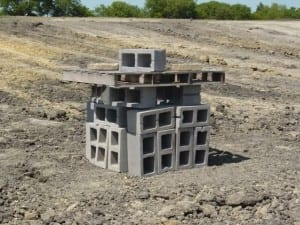Conservation Futures funds should be used for conservation, not urban parks
August 9th, 2011
If this is how money will be doled out, then the Tribe has been duped into supporting this funding program.
We have learned that the Thurston County Commission intends to support using Thurston Conservation Futures money to support “preserving” land for an urban park in downtown Olympia. This appears to fail the test of the intended use for this funding source and does nothing for conservation.
The Conservation Futures Program is established by State law to acquire interests or rights in real property for the preservation of open spaces. Funds are acquired through a property tax levy, in Thurston County 3.85 cents per thousand dollars of assessed valuation, and are used to purchase the land or the rights to future development of the land.
Conservation Futures is a land preservation program that protects, preserves, maintains, improves, restores, and limits the future use of threatened areas of open space, timberlands, wetlands, habitat areas, culturally significant sites, and agricultural farmlands. It was foreseen as a tool to help offset the impacts of urban sprawl by acquiring properties outside the urban area and in recognition of the Growth Management Act principles for increasing density within the urban growth boundaries.
The Legislature found that Conservation Futures are a useful tool for counties to preserve land of public interest for future generations and are encouraged to use some conservation futures as one tool for salmon preservation purposes. It is one source of funding that many partnerships have looked to help fund acquisition of land for habitat purposes. Clearly, if money is used to acquire already developed urban land for conversion to parks, there is less money available for acquiring land and habitat and easing the tension from landowners who feel their land is being taken by regulatory fiat without compensation. Projects like protection of the valuable pocket estuary at Gull Harbor or the acquisition of Woodland Creek riparian corridor will fall by the way side as funding is redirected to questionable projects.
See the dozens of unique artificial fish habitat models, fish attractors and fish cover used at fishiding.com, the industry leader and only science based, man made and artificial fish habitat, proven to provide all fish with cover they prefer to prosper.
But don’t take my word for it. Check out the funding criteria developed for the newly implemented project selection process. Does the project preserve unique or critical habitat? Does the project preserve unique natural features and or natural resources? Does it preserve critical or sensitive lands like wetlands? How did an urban park ever acquire enough ranking points to be considered a priority?
Conservation Futures is a valuable tool for conserving fish habitatand protecting open space in a county under extreme pressures from population growth. It would be a serious waste of resources and a kick in the gut of open space advocates to misuse this funding source to appease the advocates for expanding the State Capitol Campus.

